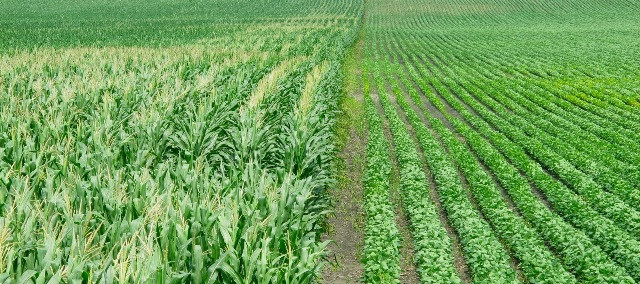In Missouri, agriculture remains as one of the top industries in the state. Inside the state’s agriculture industry, soybeans continue to reign supreme as the states top agricultural commodity and export.
Unlike some crops, soybean products have a range of uses in a variety of markets including food, animal feed, consumer products and fuel. As the market for soybeans continues to change, the operations in charge of farming them continue to change as well.
As the soybean harvesting season remains in full swing, the Missouri Times sat down with Missouri soybean farmers to discuss how they are adapting to a new and ever expanding market and some of the issues they face in the future of their operation.
Kyle Durham is a sixth generation soybean farmer in Norborne, the self-proclaimed soybean capital of the world that hosts an annual Soybean Festival.
“It’s an honest profession, there’s no sleight of hand in it”, Durham said. “Either you raise a good crop or you don’t”.
Durham spoke about how much soybean farming has changed over time. One example Durham gave was crop diversity. In the past, soybean farmers would grow multiple different crops and also raise livestock, but as the market for soybeans has expanded in the past few decades, many farmers have chosen to specialize in soybeans in particular.
Durham also spoke about the changing market for soybeans. Historically, soybean meal carried the market value for soybean crop. Soybean oil was generally used in the creation of edible oils, but that market declined sharply, almost overnight according to Durham. But work across the state on biofuels had begun around the same time, breathing new life into the soybean oil market.
Currently Missouri ranks third in the nation in biofuel production and the market for biodiesel continues to grow every year. According to the Missouri Soybean Association, biodiesel production provides the state with $1.3 billion in economic impact. But new markets for soybeans don’t stop with biodiesel. Durham says that soybeans could be a key component for replacing consumer products that contain harmful chemicals, like new fire retardant foam.
“These changes are gonna come. They seem to be coming at an ever increasing rate now, but a farmer’s gotta be adaptive,” Durham said.
Durham also spoke about some of the issues facing soybean farmers today. He specifically talked about sustainability, which has been a major topic for farmers across the state. According to Durham, facing issues like sustainability can boil down to simple acts, like optimizing planting windows and nutrient applications. Overall, Durham emphasized the importance of maintaining the land.
“We have an obligation both to those that came before us and those yet to come,” Durham said.
Neal Bredehoeft is a soybean farmer who was born and raised on his family farm that has been in operation since 1907.
Bredehoeft also spoke about some of the major changes his farm has undergone over time. One of the examples he talked about was technology. He gave an example about new precision and planting technology that has allowed farmers to plant crops and apply fertilizer or herbicides more precisely which has significantly saved on costs over time.
According to Bredehoeft, seed genetics, new technology, and techniques like advanced soil testing have all contributed to much higher crop yields over time.
Like many other farmers, Bredehoeft also talked about how the market for soybeans has changed over time. He specifically spoke about new investments into soybean products and how those investments have created a growing market for new soybean products.
“That has enabled the U.S. soybean farmer to remain profitable, even though we are growing a bigger crop every year,” Bredehoeft said.
Bredehoeft also spoke about issues facing soybean farmers. He talked about weather and sustainability, issues farmers face every day. But according to Bredehoeft, one of the issues at the forefront in the minds of farmers is remaining profitable. Things like the cost of seed, herbicide, equipment, fuel and even crop insurance, are all just a small representation of the many money related parts that contribute to running a profitable operation. But to Bredehoeft, sustainability is a key component in profitability. Factors like a healthy soil are integral to having a profitable farm that can be given to future farmers.
“The bottom line is remaining profitable so you can pass that farm onto the next generation,” Bredehoeft said.
Both Durham and Bredehoeft reflected on how much their farms have changed from when their ancestors operated them. Everything from technology to the market. But according to them, farmers remain adaptable despite change or any multitude of issues, which allows them to continue as stewards of the land waiting for the next generation to take over.




